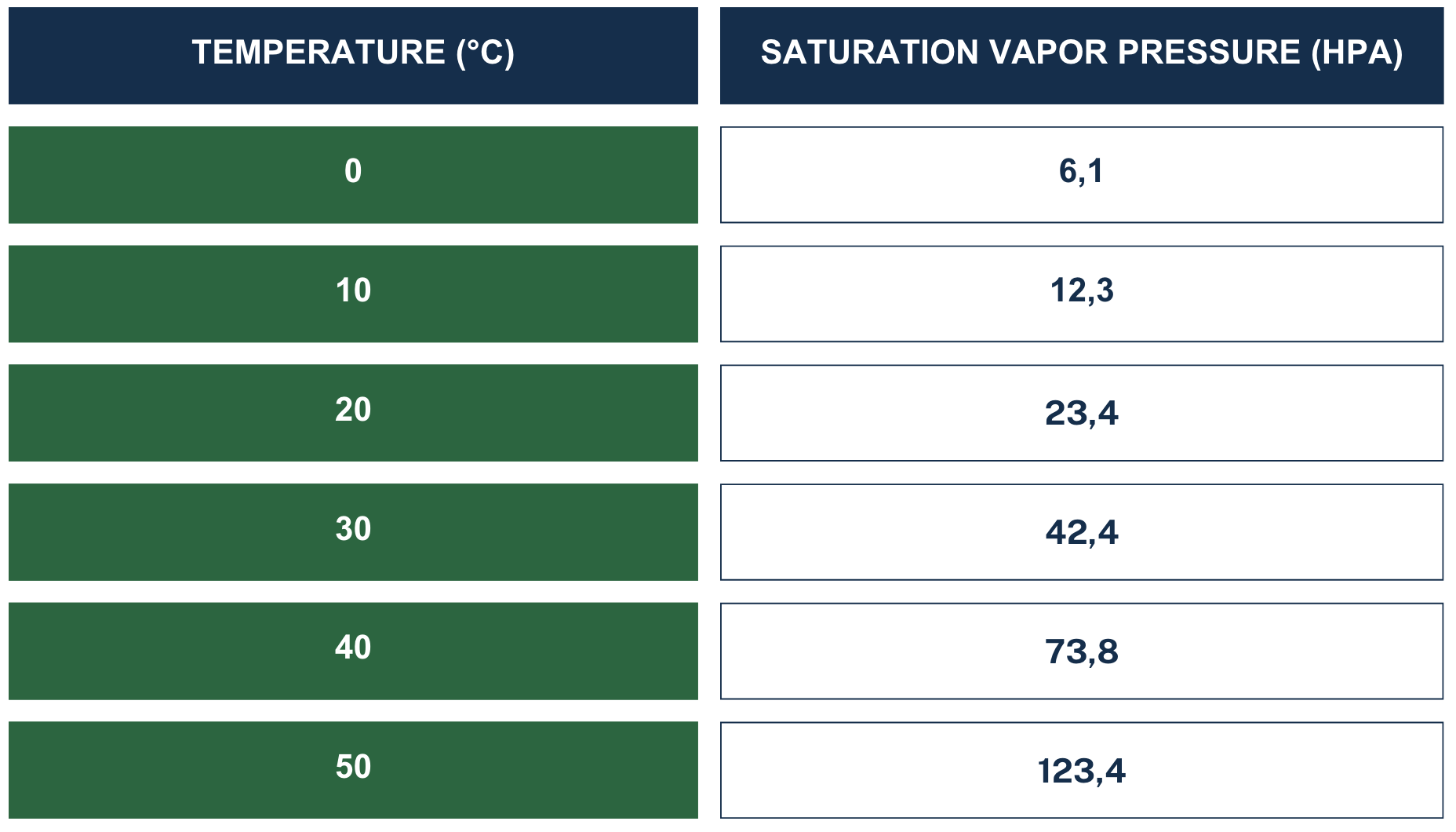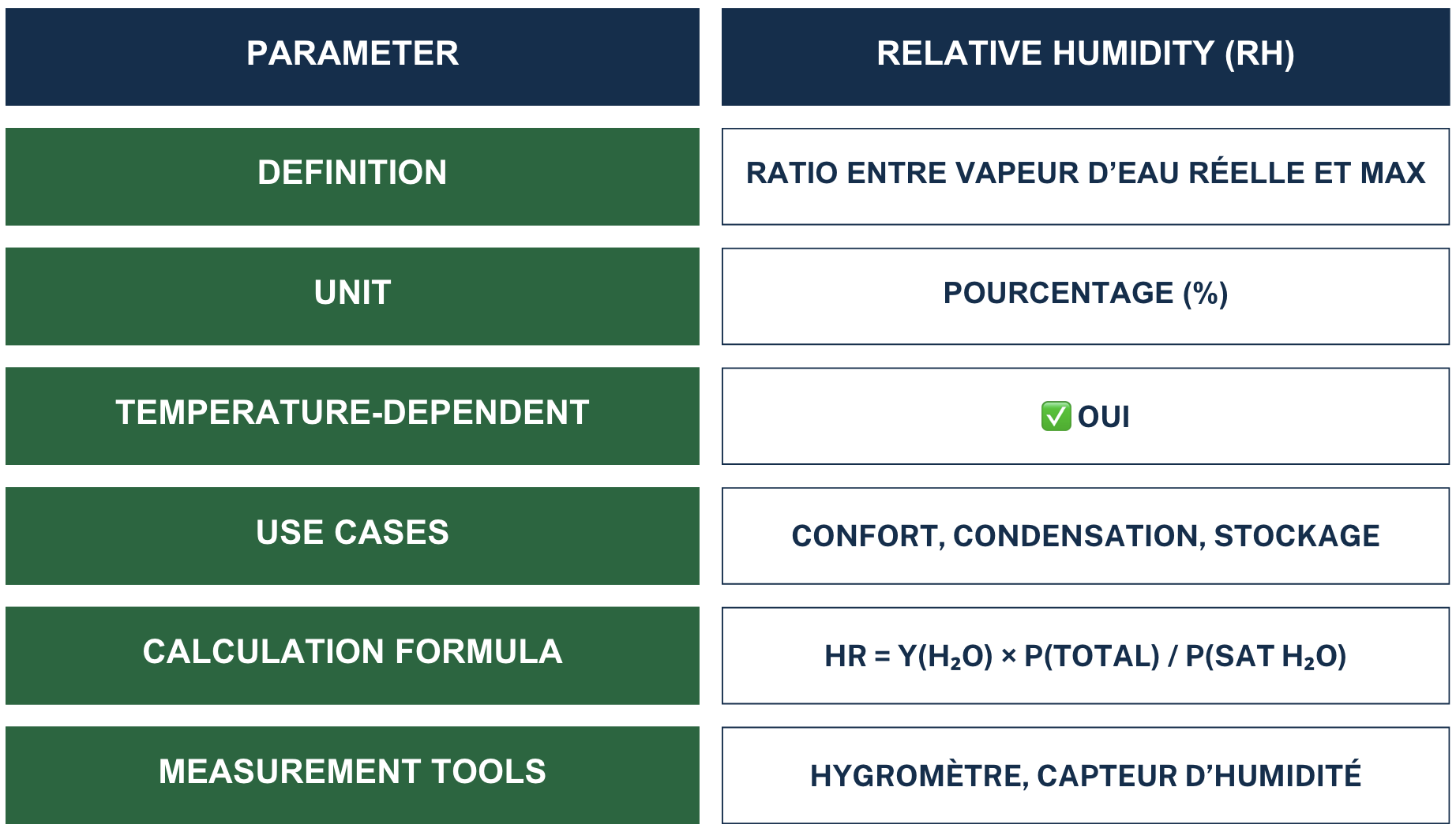
July 18, 2025
Relative humidity (RH) represents the ratio, expressed as a percentage, between the current quantity of water vapor present in the air and the maximum quantity that this air can contain at a given temperature before condensation.
In other words:
RH = 0% → perfectly dry air
RH = 100% → saturation, water starts to condense
The capacity of the air to contain water vapor increases with temperature. This is why, when hot, humid air cools, it can reach a saturation point, causing condensation (dew point) to form.
The calculation of relative humidity is based on the relationship between the actual water vapor pressure and the saturated vapor pressure at a given temperature.
Here is the rigorous physical formula:
HR = P (H₂ O)/P (sat H₂ O) = Y (H₂ O) × P (total)/P (sat H₂ O)
With:
This formula is used in professional tools such as humidity sensors, humidity meters, or in thermodynamic modeling.

The relative humidity level is a key indicator in:
A rate between 40% and 60% is generally recommended for a healthy environment.
The dew point is the temperature at which air becomes saturated with water vapor (RH = 100%) and water begins to condense.
It can be calculated from the relative humidity level and the ambient temperature.
👉 The dew point calculation is based on the same logic asRelative humidity, via the saturating vapor pressure.

When it's hot, we cool our body by evaporating sweat from the surface of our skin. If the relative humidity in the air is too high, evaporation is much slower and it is difficult to regulate our internal temperature. That's what happens in hot, humid climates.
Conversely, if the relative humidity is too low, then our mucous membranes dry out, which causes irritation and sometimes nosebleeds. This explains the feeling of discomfort during long plane trips, as the air in the cabin is often very dry.